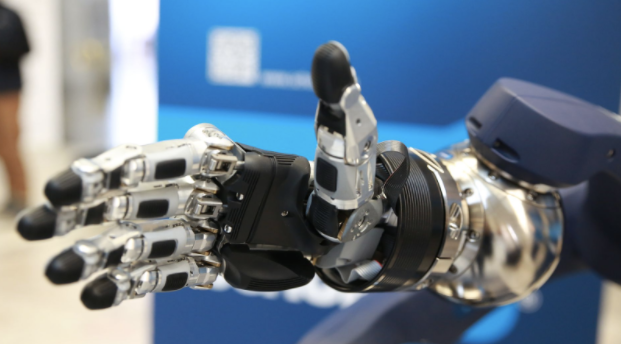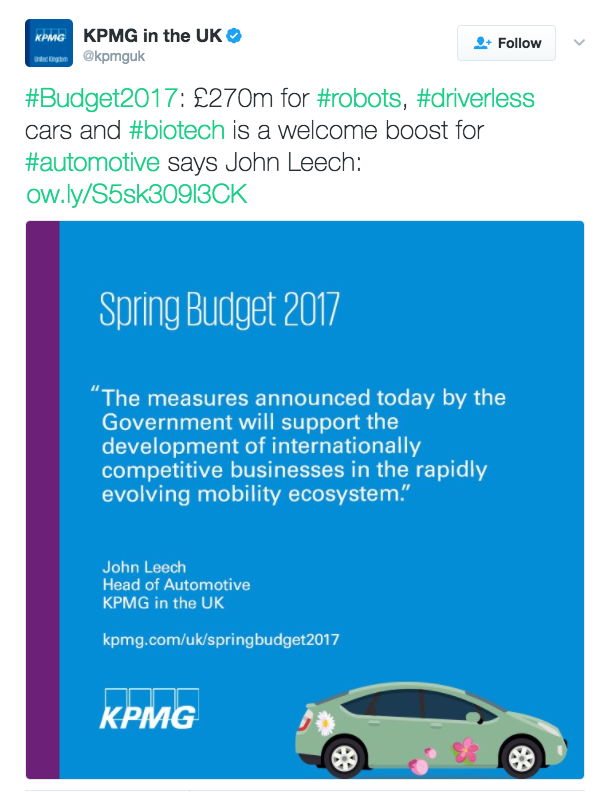
Over 800 leading scientists, companies, and policymakers working in robotics will convene at the European Robotics Forum (#ERF2017) in Edinburgh, 22-24 March. This year’s theme is “Living and Working With Robots” with a focus on applications in manufacturing, disaster relief, agriculture, healthcare, assistive living, education, and mining.
The 3-day programme features keynotes, panel discussions, workshops, and plenty of robots roaming the exhibit floor. Visitors may encounter a humanoid from Pal Robotics, a bartender robot from KUKA, Shadow’s human-like hands, or the latest state-of-the-art robots from European research. Success stories from Horizon 2020, the European Union’s framework programme for research and innovation, and FP7 European projects will be on display.
Dr Cécile Huet Deputy Head of European Commission Robotics & Artificial Intelligence Unit, said, “A set of EU projects will demonstrate the broad impact of the EU funding programme in robotics: from progress in foundational research in robot learning, to in touch sensing for a new dimension in intuitive Human-Robot cooperation, to inspection in the oil-and-gas industry, security, care, manufacturing for SMEs, or the vast applications enabled by the progress in drones autonomous navigation.”
Reinhard Lafrenz, Secretary General of euRobotics said, “A rise in sales in robotics is driving the industry forward, and it’s not just benefiting companies who sell robots, but also SMEs and larger industries that use robots to increase their productivity and adopt new ways of thinking about their business. Around 80 robotics start-ups were created last year in Europe, which is truly remarkable. At euRobotics, we nurture the robotics industry ecosystem in Europe; keep an eye out for the Tech Transfer award and the Entrepreneurship award we’ll be giving out at ERF.”
Projects presented will include:
- FUTURA – Focused Ultrasound Therapy Using Robotic Approaches
- PETROBOT – Use cases for inspection robots opening up the oil-, gas- and petrochemical markets
- sFly – Swarm of Micro Flying Robots
- SMErobotics – The European Robotics Initiative for Strengthening the Competitiveness of SMEs in Manufacturing by Integrating aspects of Cognitive Systems
- STRANDS – Spatio-Temporal Representations and Activities For Cognitive Control in Long-Term Scenarios
- WEARHAP – WEARable HAPtics for Humans and Robots
- Xperience – Robots Bootstrapped through Learning from Experience
The increased use of Artificial Intelligence and Machine Learning in robotics will be highlighted in two keynote presentations. Raia Hadsell, Senior Research Scientist at DeepMind will focus on deep learning, and strategies to make robots that can continuously learn and improve over time. Stan Boland, CEO of FiveAI, will talk about his company’s aim to accelerate the arrival of fully autonomous vehicles.
Professor David Lane, ERF2017 General Chair and Director of the Edinburgh Centre for Robotics, said, “We’re delighted this year to have two invited keynotes of outstanding quality and relevance from the UK, representing both research and disruptive industrial application of robotics and artificial intelligence. EURobotics and its members are committed to the innovation that translates technology from research to new products and services. New industries are being created, with robotics providing the essential arms, legs and sensors that bring big data and artificial intelligence out of the laboratory and into the real world.”
Throughout ERF2017, emphasis will be given to the impact of robots on society and the economy. Keith Brown MSP, Cabinet Secretary for Economy, Jobs and Fair Work, will open the event, said, “The European Robotics Forum provides an opportunity for Scotland to showcase our world-leading research and expertise in robotics, artificial intelligence and human-robot interaction. This event will shine a light on some of the outstanding developments being pioneered and demonstrates Scotland’s vital role in this globally significant area.”
In discussing robots and society, Dr Patricia A. Vargas, ERF2017 General Chair and Director of the Robotics Laboratory at Heriot-Watt University, said, “As robots gradually move to our homes and workplace, we must make sure they are fully ethical. A potential morality code for robots should include human responsibilities, and take into account how humans can interact with robots in a safe way. The European Robotics Forum is the ideal place to drive these discussions.”
Ultimately, the forum aims to understand how robots can benefit small and medium-sized businesses, and how links between industry and academia can be improved to better exploit the strength of European robotics and AI research. As robots start leaving the lab to enter our home and work environments, it becomes increasingly important to understand how they will best work alongside human co-workers and users. Issues of policy, the law, and ethics will be debated during dedicated workshops.
Dr Katrin Lohan, General Chair and Deputy Director of the Robotics Laboratory at Heriot-Watt University said, “It is important how to integrate robotics into the workflow so that it support and not disrupt the human workers. The potential of natural interaction interfaces and non-verbal communication cues needs to be further explored. The synergies of robots and human workers could make all the difference for small and medium-sized businesses to discuss this the European Robotics Forum is the ideal place as it joins industry and academia community. ”
______________________
Confirmed keynote speakers include:
Keith Brown, Cabinet Secretary for the Economy, Jobs and Fair Work, Member of the Scottish Parliament
Raia Hadsell, Senior Research Scientist at DeepMind
Stan Boland, CEO of FiveAI
The full programme can be found here.
Dates: 22 – 24 March
Venue: EICC, The Exchange, 150 Morrison St., EH3 8EE Edinburgh, Scotland
Participants: 800+ participants expected
Website: http://www.erf2017.eu/
Press Passes:
Journalists may request free press badges, or support with interviews, by emailing publicity.chairs@erf2017.eu. Please see the website for additional information.
Organisers
The European Robotics Forum is organised by euRobotics under SPARC, the Public-Private partnership for Robotics in Europe. This year’s conference is hosted by the Edinburgh Centre for Robotics.
About euRobotics and SPARC
euRobotics is a non-profit organisation based in Brussels with the objective to make robotics beneficial for Europe’s economy and society. With more than 250 member organisations, euRobotics also provides the European Robotics Community with a legal entity to engage in a public/private partnership with the European Commission, named SPARC.
SPARC, the public-private partnership (PPP) between the European Commission and euRobotics, is a European initiative to maintain and extend Europe’s leadership in civilian robotics. Its aim is to strategically position European robotics in the world thereby securing major benefits for the European economy and the society at large.
SPARC is the largest research and innovation programme in civilian robotics in the world, with 700 million euro in funding from the European Commission between 2014 to 2020, which is tripled by European industry to yield a total investment of 2.1 billion euro. SPARC will stimulate an ever more vibrant and effective robotics community that collaborates in the successful development of technical transfer and commercial exploitation.
www.eu-robotics.net
www.eu-robotics.net/sparc
Press contact details:
Sabine Hauert, Robohub President
Sabine.Hauert@robohub.org
OR
Kassie Perlongo, Managing Editor
Kassie.Perlongo@robohub.org





